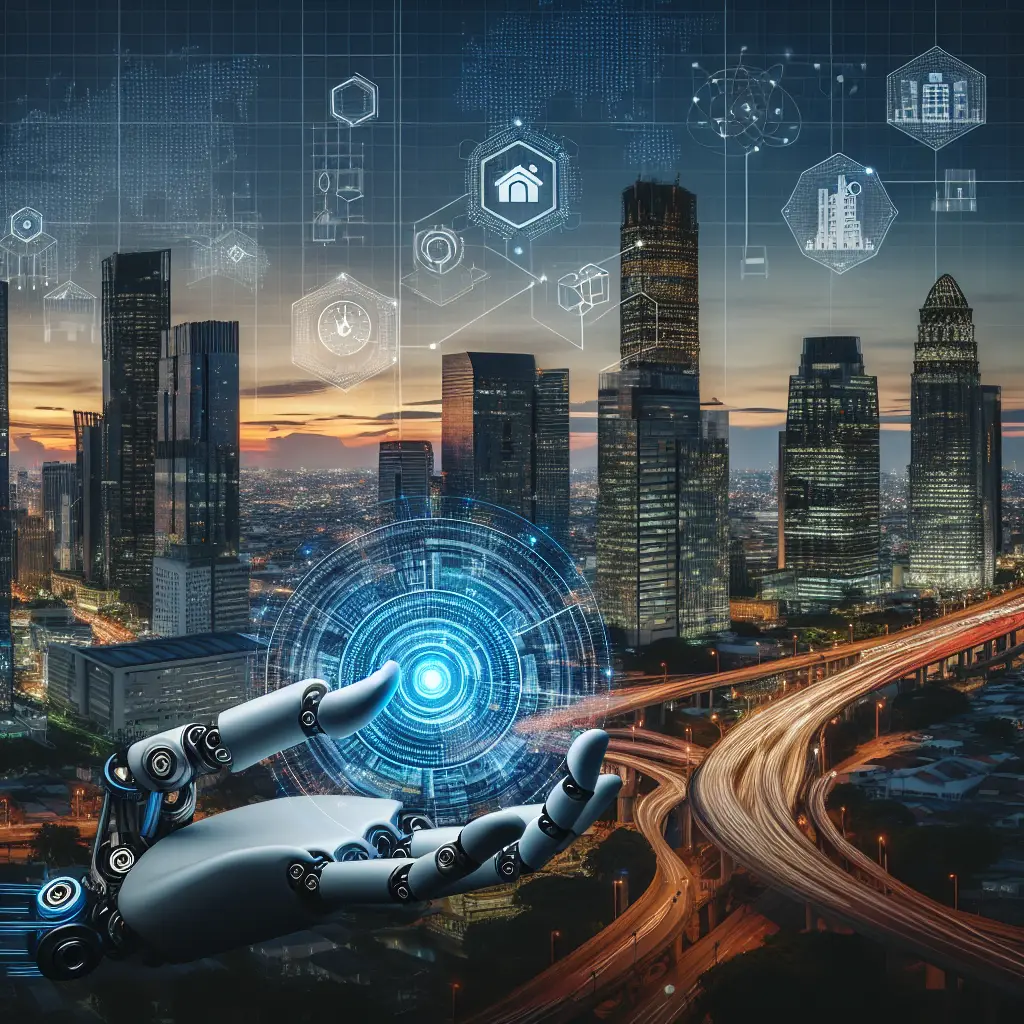Artificial Intelligence (AI) has significantly transformed various industries, including urban planning. Introducing AI into urban planning has led to noteworthy advancements in how we design and manage our urban spaces, enabling more sustainable and efficient city development. This article explores how AI is now playing a key role in urban planning, with a focus on predictive analytics, modeling and simulation, geospatial recognition, resource allocation, and public engagement.
Predictive Analytics in Urban Planning
One of the most powerful applications of AI in urban planning revolves around predictive analytics. Planners use AI-powered tools to anticipate future needs based on current and historical patterns, playing a significant role in transportation planning, land use, and population growth projection.
In transportation planning, AI-powered predictive analytics can forecast transportation demands, allowing city planners to optimize public transit routes, reduce traffic congestion, and anticipate future mobility needs. Equipped with sophisticated machine learning algorithms, AI predictive analytics gives insights into when and where demand will peak, which transposes into planning decisions that are more responsive to citizens’ needs.
When it comes to land-use planning, AI aids in making timely and accurate predictions regarding future land requirements. Armed with land-use histories and current trends, AI can anticipate future land use variations for residential, commercial, and public spaces, promoting effective zoning decisions and efficient land use management.
AI’s predictive power also extends to anticipating population growth patterns. By assessing factors such as birth rates, death rates, immigration, and migration trends, AI tools can predict future population sizes and demographic distributions. This information assists planners in designating resources for future needs, such as creating sufficient housing and public amenities.
Modeling and Simulation in Urban Planning
The AI-driven modeling and simulation processes in urban planning facilitate a comprehensive understanding of urban dynamics. Plotting robust urban growth models, AI simulates various scenarios considering demographic changes, economic forces, environmental factors, and policy influences.
For instance, AI can predict the effects of different economic conditions on urban expansion or simulate the impact of various climate change scenarios on city infrastructure. These simulated outcomes assist urban planners in addressing different potential situations, thus crafting a plan that prepares the city for diverse eventualities.
Geospatial Recognition in Urban Planning
Geospatial recognition, another facet of urban planning where AI plays an instrumental role, pertains to analyzing geographical data to identify patterns, relationships, and trends. Satellite imaging powered by AI is supplanting conventional paper-mapping techniques, offering planners detailed, accurate, and instantly updateable geographical data.
Anquipped with object recognition capabilities, AI can identify and differentiate between buildings, roads, green spaces, and water bodies. By generating a detailed, near real-time city map, this technology aids urban planners in addressing specific city needs, such as the creation of green spaces, zoning plans, and infrastructure development.
Resource Allocation in Urban Planning
Accurate resource allocation is critical in effective urban planning, and here is where AI algorithms prove extraordinarily useful. By examining extensive data sets of demographic patterns, resource usage, income levels, and other relevant features, AI can generate robust models for efficiently distributing resources ranging from public transportation to healthcare.
For example, by analyzing commuting patterns and population usage, an AI algorithm can help optimize public transport routes to ensure resources are adequately serving citizens’ needs. Simultaneously, AI can predict a neighborhood’s healthcare demands and aid in planning the distribution and allocation of healthcare facilities in the city.
Public Engagement in Urban Planning
AI also paves the way for unprecedented levels of public engagement in urban planning. AI-powered platforms enable citizens to express their views on local development plans, enhancing public participation. Concurrently, AI tools help sift through vast amounts of public feedback, highlighting key themes and innovative ideas, which ensures an inclusive and consolidated planning process.
For example, chatbots and virtual assistants are now commonly utilized by city authorities to gather public opinions on proposed urban projects. Furthermore, machine learning models help in analyzing the comments to pinpoint public sentiment and provide insightful takeaways for urban planners.
The Upshot: AI in Urban Planning
Artificial intelligence’s role in urban planning cannot be understated. The incorporation of AI technology in urban planning melds robust predictive capabilities with extensive data analysis to streamline city planning processes, bolster resource allocation, and enhance public participation. Be it predicting future transport demands, simulating the impact of climate changes, or enabling an engaged citizenship in city planning, AI is decidedly reshaping our urban future. Ultimately, the role of AI in urban planning intertwines with the very notion of planning for people, with people, in a more efficient, responsive, and sustainable way. Together, AI and urban planning construct a pathway towards a smarter, more livable urban future.
Share this content:

